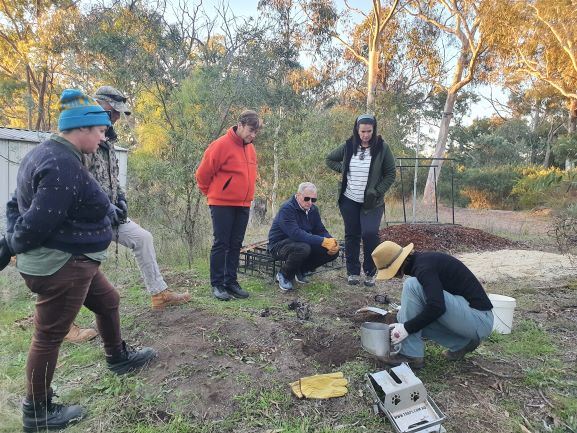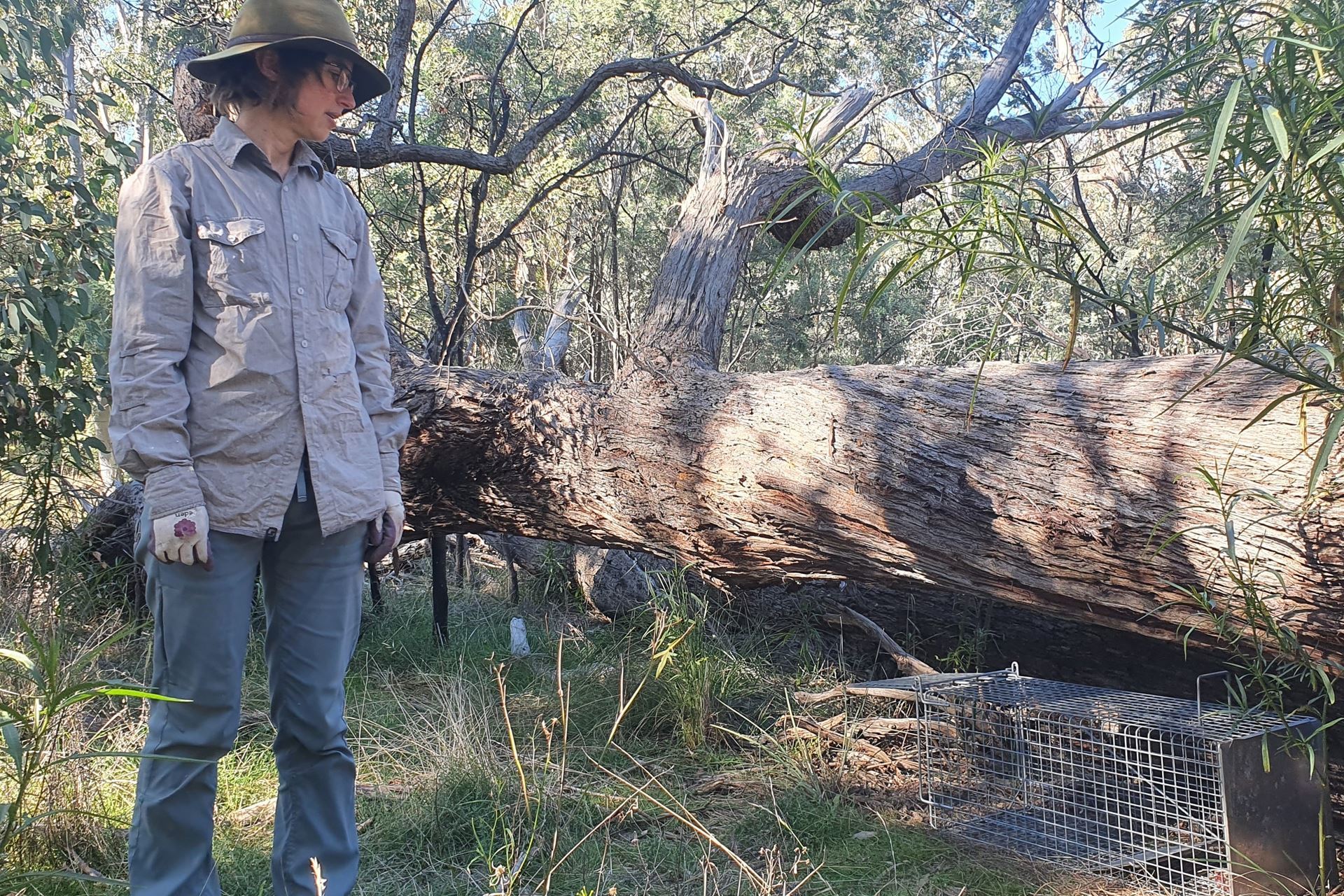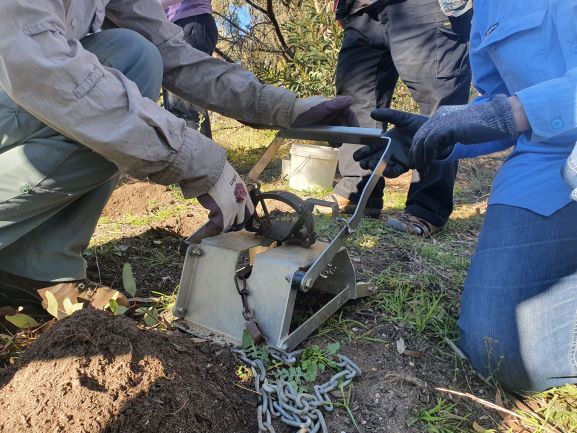This event held on the 22 May 2021 was a combined webinar and paddock demonstration with Alice McGlashan. Alice is a natural resource management practitioner and environmental educator who lives on a rural bush property near Canberra. At this event she shared her knowledge about feral predator management using different trapping methods.
The webinar recording can be viewed here.
Alice recorded a 15-minute video demonstrating the use of padded jaw traps, you can view the video here.

This is a summary of the main points from the webinar and paddock walk, a list of resources can be found at the bottom of this page.
- The Pest Smart Website has a best practice guide for the use of cage and padded jaw traps. The website includes information on the model code of practice for the humane control of foxes and feral cats. Control programs should aim to reduce the negative impacts of the feral animal using the most humane, cost effective and efficient techniques available. You can browse the website for information and advice on most feral animals. Model Code of practice for the humane control of foxes.
- Before you start trapping it is useful to know where pest animals are moving and feeding on your property. Information on our previous event Feral Animal Monitoring can be found here.
- Once you have determined a suitable site for trapping, Alice suggests you free feed using tasty treats for random days over a couple of weeks before you set your traps. You can use sardines, chicken wings, fresh dog bones, or roadkill rabbits for free feeding and as bait when setting traps.
- Anchor your traps safely using galvanised 8mm or 10mm chain and good quality galvanised small D shackles, to the trunk of a tree or strong fence post. You do not want your trapped animal escaping with a trap on its foot. If your neighbour’s dog gets trapped you can safely release and return them.
- Be trap responsible – check your trap every morning and afternoon. In the morning cover the trap so you don’t trap non target species during the day. You must not leave traps unsupervised and they need to be checked twice/day. If you catch a fox or feral cat you need a strategy to dispose of them safely and humanely. This could include using a captive bolt gun, organising a shooter or during working hours you can call South East Local Land Services for help. Having a cage big enough to hold the fox or cat is a good idea because you can release them into the cage and cover it in a quiet place until they can be euthanized.

Links and Resources
South East Local Land Services Feral Fighters Program - Feral Fighters is an initiative to strategically target pest animals at a regional and state scale through strategic, coordinated group baiting control programs.
South East Local Land Services have Biosecurity Officers who can help you develop a feral animal control program. They can help you organise a coordinated feral animal baiting program with your neighbours. Find your local Land Services Office here.
Members Camera loan program - Small Farms Network Capital Region Members can borrow a wildlife monitoring camera to use for feral animal monitoring.
Trapping Equipment- There are many suppliers of trapping equipment. Alice uses Victor #1 1/2 and #1 3/4 2 coil traps from traps.com.au and gettrapped.com.au. You are encouraged to do your own research for suitable suppliers.

Pest Smart Website https://pestsmart.org.au/pest-animals/
Trapping of foxes using padded-jaw traps (fox005) standard operating procedure.
General methods of euthanasia under field conditions
This project was supported by South East Local Land Services.